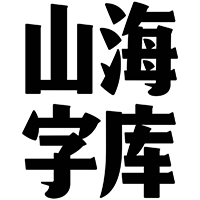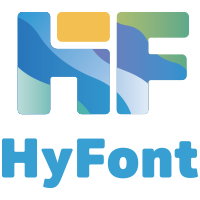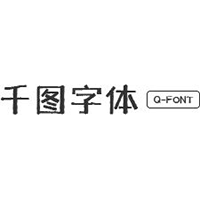Interview: Jessica Hische on lettering mistakes, why you should code & why cheap designers are like free sofas
Jessica Hische is a bit of a dichotomy. Alongside producing hand-drawing beautiful lettering for clients including Tiffany and on a stamp for the US Postal Service, she is also a web design nerd--even producing a series of podcasts on markup language. We caught up with Jessica fresh from giving a funny, thoughtful talk at the Flash on the Beach festival in Brighton.
FOTB has grown from having a focus on interactive design into a more open design conference--drawing in graphics and typography, animation, and illustration (the first day was headlined by Jon Burgerman, who we'll post an interview with tomorrow). Working across disciplines--and finding your own path unconstrained by job descriptions of illustrator, animator, web designer or developer--was a major theme at the festival. Jessica pitched her speech more at the conference's traditional crowd than its newcomers, discussing why designers should learn code – but also talked about her love of lettering and her disenfranchisement with design.

After holding out so we could both watch Han Hoogerbrooge's madcap animations, we sat down to discuss the contents of her talk further--buoyed along by her engaging mix of twinkly-eyed enthusiasm, thoughtful contemplation and swearing that could make a sailor blush.
DA:How did you get into both lettering and web design?
JH:"I was a generalist in college. You take a lot of courses to feel out what you're interested in. I really felt web design was too limited for me to interested in it--[instead] I was really into typography.
"The further I got into lettering [in my career], the more I wanted outlets to explore things that were different from what I did for a living. What ended up being the deciding factor is that I had all these [web-focussed] side projects I wanted to do that I knew would not make any money, or they weren't designed to make money, or they wouldn't make enough money that I could pay someone a fair wage to develop them. So I ended up teaching myself a lot of the web development stuff because if there's a project I want to do, I have to complete it within two months of thinking of it or I'll lose enthusiasm."
DA:Why do you love lettering?
JH:"The awesome thing about lettering--which is different from many forms of art--is that you can actually see your mistakes. There are sophomore mistakes that people do at the beginning that you spot everywhere. For example, a lot of people make 'W's by turning 'M's upside down.
"Other things are more difficult to spot. For example, if you're drawing a lowercase 'r', most people draw the upper arm way too long. Another big one you can tell someone is fresh to lettering is that all the letters are in the same proportion, as they think about everything in terms of decoration--not as building something from the ground up. So you see a lot of structural change in [the work of] people who are confident in their lettering. It's not the same rectangular shape with serifs and doodads added."

DA:Why web design rather than print design (which you don't do anymore)?
JH:"I always love design but the more I designed for clients, the less I liked the process of designing for them. I do lettering and illustration [for money, which clients don't mess with too much] and web design for fun.
"I've been able to sequester web design as this fun, unadulterated-by-clients thing that I do. [Web design] is something that's super technical but can be super tedious if you have to deal with asshole clients."
DA:Do designers need to know how to code to work on web projects?
JH:"You need a foundation in some markup and some code, [even if] you are just giving art direction to someone else. To be able to communicate in the proper terms means everything. To be able to say 'make the box shadow 2 pixels instead of 4 pixels' is better than 'make the shadow closer to the box'.
"When I have to critique someone else's web design, rather than write up a giant email or take a screengrab and move stuff around in Photoshop, I put together a really quick CSS doc making my changes. For example, the Type Director's Club were redesigning their web site and I had some revisions I wanted to add to it.
I put a button that changed between the two and said 'toggle back and forth and see what you think'. It was frightening to them, because they thought it was so much more work than what it was. They said 'we're just going to stick with what we have because it's already done' but I said "you realise that what I gave you is already done". [With web site design], you're giving a sketch but the sketch is essentially what's final."

DA:Is it easy to start learning code?
JH: "Markup is so just a way of explaining things: it's not Swahili. You can learn it easily. It's written simply and there are clear connections between CSS and all the terminology for print design, so it became more like a creative crossword puzzle for me. [When I was learning it] I would just put on shit television and just create something.
"I would also play games with myself. For example, when I was designing my website, I took a train journey with a blank HTML document and a blank CSS document, and--without testing it in the browser--just wrote the markup to see how close I could get to what my vision was without checking as I went. And I could see myself starting the think in pixels rather than thinking in Ems."
DA:One of the web projects you're best known for is the 'Should I work for free?' flowchart [which was all hand-coded in CSS by Jessica]. A few weeks ago, the question of how the general public perceive the value of design was raised again when clothing design duo Brat and Suzie told the panel on the BBC TV show Dragon's Den that they pay illustrators a one-off fee of £20 to produce artworks for their t-shirts. How can we get the public--and clients specifically--to value the worth of design work?
JH:"It starts with conversations between designers. There needs to a massive movement showing appreciation for each other--and the value of our own work. We need to pat each other on the back for turning down work because it's too low paying. We need to say 'you are doing us a solid by turning down that cheap work'.
"It's not the client's fault. If you were a client, you'd want things for cheap. If you are trying to hire someone who's not able to tell you how valuable they are, you want to get them at the bargain rate. But if they value themselves, you tend to value them too.
"It's the same thing as if you are on Craigslist to get a sofa, and you see one for free. You think there's something tragically wrong with it--maybe there are bedbugs. But if you see a sofa on there for $2,500, you think 'oh man, that sofa must be amazing'. It's the same thing with art--you set your own value.
"If you say that you're a cheap designer, you're a cheap designer. It's really hard to recover from that. A client may promise you'll get plenty of work [if you do this one job on the cheap], but you've basically set your baseline price with that client. You'll never get extraordinarily more from them. You'll get a lot of recommendations to be 'the cheap person', but the last thing you want to do is be the knockoff handbag of the design community.
[The reason why many clients don't value design] is because haven't had a designer prove to them the value of it. You need to prove it to clients who've hired a bunch of shitty designers and their business has not been that successful. [When] they hire a good designer, they see the difference."
-
 ShanhaiFonts
ShanhaiFonts
Brand:山海字库
Area:China

-
 Cangji Fonts
Cangji Fonts
Brand: 仓迹字库
Area: China

-
 JT Foundry
JT Foundry
Brand: 翰字铸造
Area: Taiwan, China

-
 Handmadefont
Handmadefont
Brand:
Area: Estonia

-
·千图字体
-
 HyFont Studio
HyFont Studio
Brand: 新美字库
Area: China

- ·Statement and Counter-Statement, Automatically Arranged Alphabets, and Arts/Rats/Star
- ·Benetton identity redesign
- ·XUID Arrays: One Less Thing To Worry About
- ·The Future of Sex poster
- ·Chinese College Student Invents Smog Font
- ·Surabaya Beat by Beat Presser, Afterhours Books
- ·"David Bowie is turning us all into voyeurs" button
- ·Type terms: the animated typographic cheat sheet
- ·"Die Alpen – Vielfalt in Europa" stamp
- ·Troubadour poster, Opera Plovdiv























